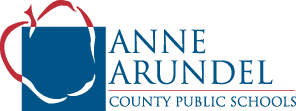Restorative Practices (RP)
Restorative Practices (RP) empower schools to build a community where all students, staff, and families feel connected and valued. If a situation occurs where harm is done, schools can also use RP to address behavior in a way that holds students accountable for repairing the harm while still providing them with an honorable path back into the school community.
Why is AACPS Restorative?
Students cannot learn if they are not in school. Restorative Practices help keep students in school by increasing connections between all members of the school community and decreasing referrals, suspensions, and dropout rates.
Becoming Restorative is also Maryland law. In 2019, Maryland’s legislature required all schools to incorporate Restorative Practices, defining Restorative Practices as a relationship-focused student discipline model that: (I) Is preventative and proactive (II) Emphasizes building strong relationships […] (III) focuses on accountability for any harm done […]; and (IV) addresses ways to repair the relationships affected […]
House Bill 725, Article II, Section 17(c) of Maryland Constitution, enacted May 25, 2019 and Education Article Section 7-306
All of AACPS schools are expected to use regular community building circles as a universal support to build community, open the brain for learning, increase empathy, and decrease anonymity.
In addition, many AACPS schools have a Circle Request System to respond to harm in a systematic and Restorative way. By SY2025/26, all secondary schools will have a Circle Request System led by a core team of RP-Trained staff, and by SY2026/27, all elementary schools will have a Circle Request System. Circle Request Systems use circles to help students learn from behavioral mistakes whenever safe and appropriate. These “responsive circles” do not replace discipline consequences but can be paired with them to help students learn to resolve their own conflicts with others. Ideally, they are used before disciplinary measures are needed, can be used upon return from suspension, and considered in decisions around consequences.
Finally, AACPS has a Countywide RP Team of staff who are fully trained in RP and trained to train whole schools in community building circles. This dedicated team of approximately 100 members are ambassadors for RP throughout our schools.
What do restorative practices look like?
Restorative Practices are used both proactively to build and support the school community and responsively to rebuild relationships after a fight, vandalism, or other situation where harm was done. Some restorative practices include:
Community-building Circles
Five Restorative Questions
Responsive Circles to Address Harm
RP can help address any level of student misconduct and can be used in addition to, or instead of, other disciplinary interventions.
Contact
Kathryn Rockefeller, J.D.
Senior School Climate Specialist
KRockefeller@aacps.org
